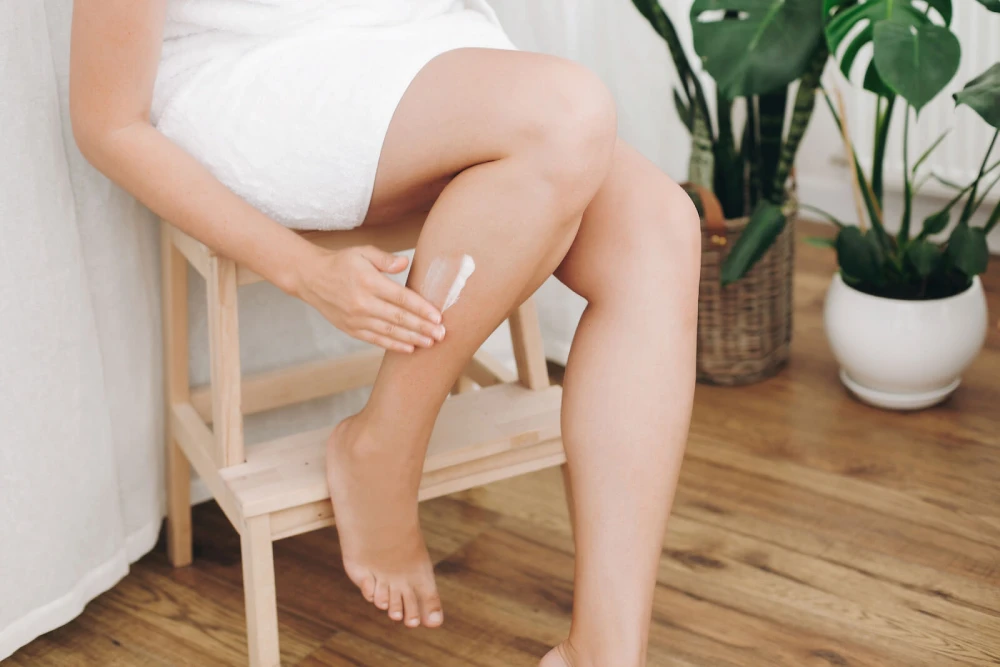Cryo Laser & Cryo Sclerotherapy (CLaCS)
The Power of The Brazilian Combination
What is CLaCS Treatment?
It is a revolutionary treatment for spider veins and prominent veins of the leg. The CLaCS technique was developed by Dr. Kasuo Miyake of Sao Paulo, Brazil. His pioneering work has produced the most successful results of achieving eradication of the unsightly and embarrassing spider veins and prominent veins.
The CLaCS procedure combines the technologies of laser, sclerotherapy, augmented reality, and skin cooling for anesthesia.
The results using the CLaCS procedure are far superior to conventional sclerotherapy for feeder veins and spider veins.
Know what puts you at risk
How CLaCS Works?
- It combines the technologies of laser, sclerotherapy, augmented reality, and skin cooling for anesthesia.
- The augmented reality is provided by the VeinViewer, a device that images veins up to 1.0 centimeter beneath the skin using infrared sensing. The image is then projected back on to the skin in real time. This enables the physician to see the feeder veins that would not be visible without the VeinViewer.
- The feeder veins are then treated with a transdermal laser, which causes a visible heat injury to the veins. Because of the wavelength of the laser, the energy is absorbed more by blood than skin. This allows selective damage to the vein (photothermolysis) without damage to the skin.
- These feeder veins, after being damaged by the laser, are then injected with a chemical sclerosant, again using the Vein Viewer images to guide the sclerotherapy injections. Following this the overlying spider veins of the skin are also treated with laser and injected.
- The whole procedure is done using a cryo unit that produces a continuous flow of cold air to the sites of application of the transdermal laser and sclerotherapy injections. The skin cooling serves to provide surface numbness during the procedure.

Instructions
CLaCS Procedure

Things you have to do before procedure
- Drink plenty of water
- If sedative was prescribed (Xanax or Zolam), please take it 1 hour before procedure
- Do not apply creams or lotions to your leg before treatment
- Wear loose, comfortable clothing such as long pants, shorts, or skirt to accommodate bandage after treatment
- Let us know if you are taking oral contraceptive pills

Things you have to do After procedure
Activity
- Maintain your normal level of activity
- Walk at least 30 minutes daily to promote healing and limit risk of complications
- Avoid strenuous activities and heavy lifting for at least two weeks
- Do not sit or stand for long periods of time for the first week
- Avoid hot baths, or excessive sun exposure for the first week
Compression Stockings
- Keep the bandage under the stockings for 2 days
- Wear the compression stockings day and night for first two days after the procedure
- Continue to wear the stockings during the day only for the next 10 days
Dressing
- Keep the gauze and band-aids over the laser insertion site for 2 days
- After that you may shower. Remove the gauze dressing and wipe the entry site with antiseptic alcohol or betadine. Cover with band-aid until healed

Medication Prescription
A written prescription may be provided for pain medication to be taken as needed.

Schedule A Follow Up Visit
- Schedule your follow-up visit and Duplex (ultrasound) scan within 2 weeks after your procedure.
- Bruising and redness is normal. You may also feel a tugging sensation for the first week after the procedure. Sometimes people can feel a hard area like a pencil under the skin especially around the knee. This is normal and will go away in a few months. The discomfort goes away in a few weeks but should not inhibit your normal activities.
- Make sure you are taking your prescribed medications including pain killers
When To Call Your Doctor
- Pain not relieved by rest and/or pain medications
- Fever greater than 38 degrees celsius
- Difficulty breathing or feeling short of breath
- Uncontrolled bleeding from the insertion site
We Have The Answers
We know you have some questions and concerns
Is it painful?
The high flow of ice cold air directed onto the skin at the site of laser or needle application removes most of the discomfort, and most patients have little discomfort from the treatment. In patients who are especially sensitive, prior application of a skin numbing cream about an hour before treatment may be done.
How long before I see results?
The veins begin to clear after 2 to 3 weeks. A full response may take up to 2 months. Most of the resolution of the veins will be observed at about one month.
What results can I expect?
About a 70% clearing of veins is usual after the first session of CLaCS. Sometimes almost all are cleared.
What does it look like afterwards?
For the first 1-2 weeks the veins appear darker. As the veins begin to disappear the normal skin color returns.
How long will the CLaCS treatment take?
That of course depends on the extent of the spider veins and how much the patient wants to be treated. The average CLaCS treatment lasts about one hour. If a patient with many clusters of spider veins wants most or all treated during one treatment session, additional time may be scheduled.
How long will the spider veins stay away after successful CLaCS?
Since CLaCS targets the feeder veins, the developers of CLaCS believe strongly that the improvements after CLaCS will endure over time. But new spider veins can always develop.
Will I have to wear support stockings?
There is NO need to wear support stockings after the CLaCs treatment.
What limitations will I have after the procedure?
There are no limitations after treatment. A patient may return to work and usual activities. Exercise is permitted as well.
What does CLaCS involve?
There are 4 essential elements of CLaCS:
- Vigorous COOLING OF THE SKIN to reduce discomfort from laser and injections
- The use of AUGMENTED REALITY to visualize feeder veins so that they can be treated
- The application of a TRANSDERMAL LASER to the feeder veins and spider veins
- INJECTION OF THE FEEDER VEINS AND SPIDER VEINS with a chemical sclerosant (sclerotherapy)
What are the risks?
Tiny clots may develop in the spider veins or feeder veins that are treated. These pose no risk, will not travel in the circulation, and are limited to these veins. There is no increased risk for deep vein thrombosis.The risk for skin staining from the iron in clots does exist but is less than for traditional sclerotherapy. Blistering of the skin from the laser application is very rare.
Why is CLaCS not available elsewhere?
CLaCS is a new treatment in the world and has been provided in iVein Clinic since 2020 as the first center in the region to provide patients with this innovative treatment. It was developed and studied extensively in Brazil by some innovative vascular surgeons over many years. As the CLaCS results are appreciated, the treatment technique will be adopted more and more. Surgeons are being educated and trained in the CLaCS technique, and it is now being used to the benefit of patients in Australia and southern Europe.
Why is CLaCS better than sclerotherapy alone or laser treatment alone?
There are several reasons why CLaCS is superior in outcome to other spider vein treatments. One principal reason is that the combination of laser and sclerotherapy (chemical injection of the spider veins) is synergistic, i. e. the 2 together work better than each done alone.
Another reason is that the feeder veins, which when present, are seen using augmented reality and are targeted for treatment. The presence of untreated feeder veins is the principal reason spider veins fail to respond to either laser or sclerotherapy alone. The untreated feeder veins are also often responsible for the return of the spider veins after treatment with either laser or sclerotherapy. Treatment of feeder veins that are seen best using augmented reality is a crucial part of the CLaCS treatment.
Is there anything I should avoid before or after the CLaCS treatment?
A patient should avoid using any artificial skin-tanning agents for at least 2 weeks prior to CLaCS.
There are no restrictions after CLaCS.
Where does the blood go after the veins are shut down?
The blood will always take another course into more efficient veins after feeder veins and spider veins are eliminated. Often there is stagnant flow or pooling of blood in these veins, which may cause discomfort. So one may think of eliminating these veins as an improvement in the circulation


